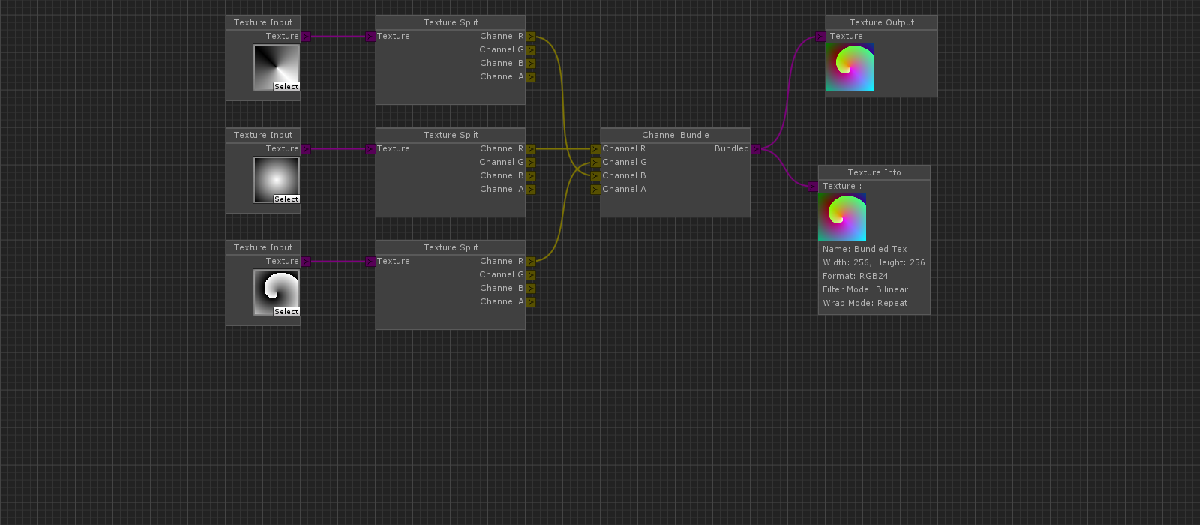Framework Overview
(NOTE: This page is still VERY WIP)
This section aims to bring you a decent overview on how the framework is structured, so you can get to modify it quickly.
This does not necessarily include implementation details – code sections that need extra detailing are commented in the source.
Also, this section is not only for those planning to get into the code, but for everyone to get an general overview and understanding of the framework.
NodeCanvas and NodeEditorState
Those two components essentially make up the save file you can load up into the Editor.
Basically, the canvas stores all the nodes and any additional information directly related to the Canvas.
In contrary, the EditorState holds all information on the state, or in other words, on how the Canvas is presented.
This includes zoom and pan values, selected Nodes, the canvasRect, etc. Not all of these values are actually saved with the asset, though.
That structure allows for multiple 'views' on the same Canvas and editing it simultaneously.
The DrawCanvas function
This function acts very similar to any other GUI control, with a few exceptions, and is responsible for drawing the Canvas. On the first glance it's just a wrapper for DrawSubCanvas , with the exception that it holds the OverlayGUI and NodeGUISkin code. DrawSubCanvas is used in the future for Nested Canvases, as the name proposes.
First of all, the background texture is splattered across the canvas area based on zoom and pan values. Then, the function NodeEditorInputSystem.HandleInputEvents invokes all dynamic input handlers of the input system to catch all kinds of Input events.
Afterwards the scale area gets initiated with a call to the custom solution GUIScaleUtility.BeginScale . Any GUI code afterwards is getting scaled appropriately.
That means that now all elements that need to be scaled are drawn, including connections, node transitions, connections, bodies and knobs.
Thereafter, the scale area gets closed again with another call to GUIScaleUtility.EndScale .
The NodeEditorInputSystem.HandleLateInputEvents function then invokes the dynamic input handlers similar to the version before,
with the exception that only those that have to be handled after GUI are invoked.
TODO Framework Explanations
- Dynamic Input System at
NodeEditorInputSystem - ConnectionType and Node fetching at
NodeTypesandConnectionTypes - Knob Behaviour and Possibilities at
NodeKnob - Event/Callback System at
NodeEditorCallbackReceiver - Save System at
NodeEditorSaveManager - Various Utilities like
GUIScaleUtility - Calculation System at
NodeEditor - Transitioning System including UnityFunc if they are ready
- Runtime GUI and limitations at
RTEditorGUImostly - Experimental/Conceptional custom NodeCanvases and traversal algorithms
